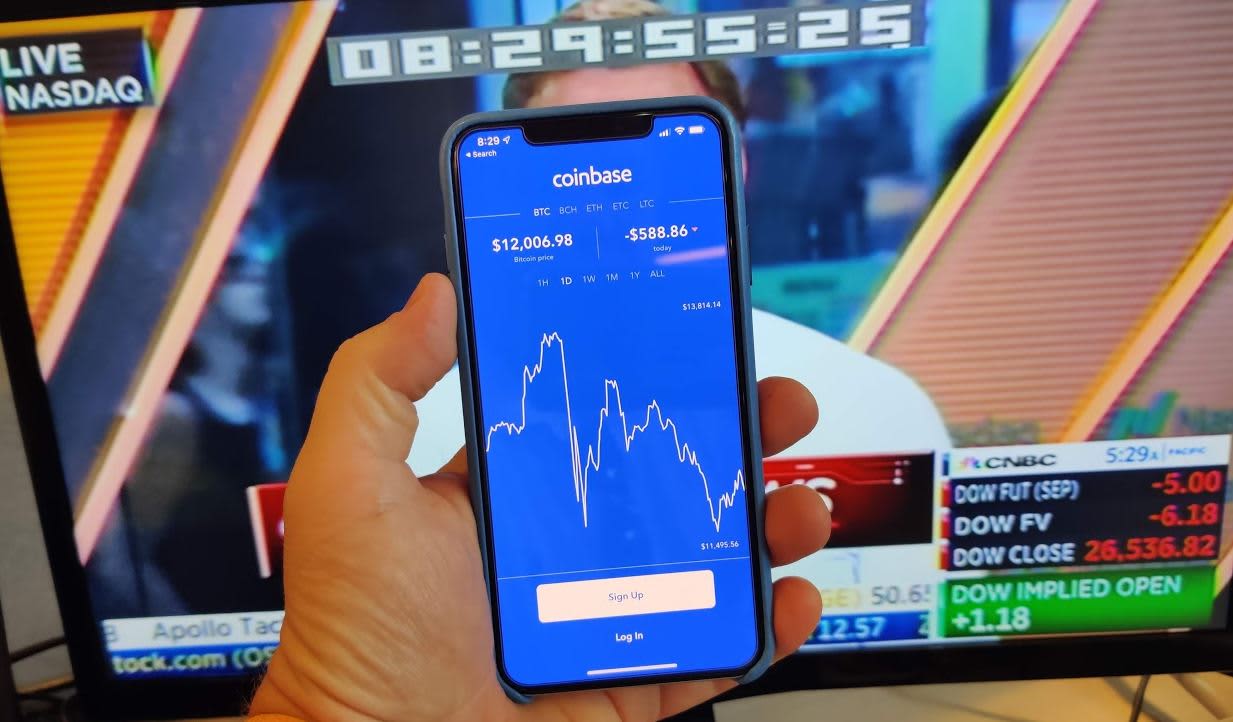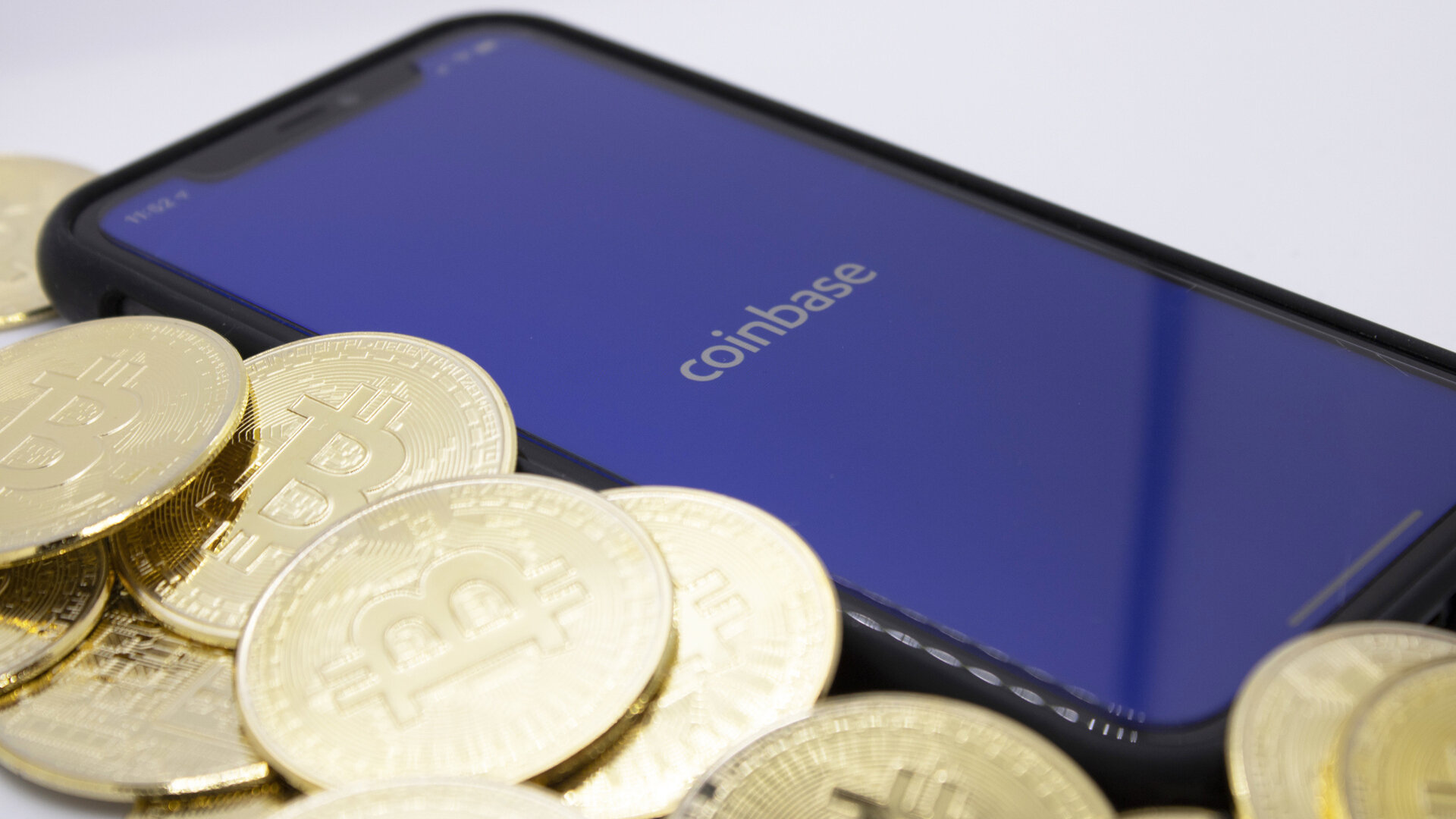Introduction
Investing in cryptocurrency has become increasingly popular in recent years, with many individuals looking to diversify their investment portfolios and take advantage of the potential financial gains offered by this emerging asset class. Coinbase, one of the largest and most trusted cryptocurrency exchanges, provides a user-friendly platform for buying, selling, and storing various cryptocurrencies.
In this guide, we will walk you through the process of buying crypto on Coinbase, covering everything from creating an account to placing an order and storing your digital assets securely. Whether you are a beginner or an experienced investor, this article will provide you with the information you need to get started on your cryptocurrency journey.
Before we delve into the specifics, it is important to understand that investing in cryptocurrency inherently involves risks. The market can be highly volatile, and the value of cryptocurrencies can fluctuate drastically. It is essential to do your own research, understand the risks involved, and only invest what you can afford to lose.
Now, let’s dive into the steps required to buy crypto on Coinbase and explore the features and benefits it offers as a trading platform. By the end of this guide, you will have a clear understanding of the process and be well-equipped to start buying and storing your chosen cryptocurrencies with confidence.
Creating a Coinbase Account
Before you can start buying cryptocurrency on Coinbase, you need to create an account. Follow these simple steps to get started:
- Visit the Coinbase website (www.coinbase.com) and click on the “Get started” button.
- Fill in your personal details, including your name, email address, and password. Ensure that you choose a strong password to protect your account.
- Agree to the terms of service and privacy policy, then click on the “Create Account” button.
- Next, Coinbase will send you a verification email. Open your email inbox and click on the verification link provided to confirm your email address.
- Once your email is verified, you will be prompted to set up two-factor authentication (2FA) for added security. Coinbase supports various 2FA methods, such as using an authenticator app or receiving SMS codes. Choose the method that suits you best and follow the instructions to enable 2FA.
After completing these steps, your Coinbase account will be created, and you will have access to the platform’s features and functionalities. It is important to note that Coinbase operates in compliance with Know Your Customer (KYC) and Anti-Money Laundering (AML) regulations. As a result, you may be required to provide additional personal information and undergo a verification process to ensure the security and integrity of the platform.
Once your account is set up, you can proceed to the next step, which is verifying your identity in order to fully activate your Coinbase account.
Verifying Your Identity
In order to comply with regulatory requirements, Coinbase requires users to verify their identity before they can start buying and selling cryptocurrencies. Here are the steps to follow:
- Log in to your Coinbase account and navigate to the “Settings” section.
- Click on “Identity Verification” or a similar option, depending on your account settings.
- Provide the necessary personal information, including your full name, date of birth, and residential address. Make sure the information matches the details on your official identification documents.
- Upload a scan or photo of a valid government-issued ID, such as a passport or driver’s license. Ensure that the document is clear and all information is legible.
- Depending on your location, you may be required to take a selfie or provide a photo for enhanced verification.
- Submit the information and documents for review. The verification process typically takes a few minutes, but it can sometimes take longer depending on the volume of requests.
Completing the identity verification process is essential for unlocking the full functionality of your Coinbase account. It not only ensures compliance with legal requirements but also provides an additional layer of security by preventing unauthorized access to your account.
It is worth noting that Coinbase takes the privacy and security of its users’ personal information seriously. The platform employs robust encryption and follows industry best practices to protect your data from unauthorized access or breaches.
Once your identity is successfully verified, you can proceed to the next step of adding payment methods to your Coinbase account.
Adding Payment Methods
In order to buy cryptocurrency on Coinbase, you need to link a payment method to your account. Coinbase offers several options for adding payment methods, including bank accounts and debit or credit cards. Follow these steps to add a payment method:
- Log in to your Coinbase account and navigate to the “Settings” section.
- Click on “Payment Methods” or a similar option, depending on your account settings.
- Choose the type of payment method you want to add, such as a bank account or card.
- Follow the on-screen instructions to enter the required information, such as your bank account details or card number, expiry date, and CVV.
- Depending on the payment method you choose, Coinbase may require additional verification steps, such as a small deposit or a code sent to your bank account or card statement. These steps are part of Coinbase’s security measures to prevent fraud and unauthorized access.
- After successfully adding a payment method, you can review and manage your linked payment methods in the “Payment Methods” section of your Coinbase account.
It’s important to note that Coinbase may charge fees for certain payment methods, such as credit card purchases. These fees may vary depending on your location and the specific payment method used. Make sure to review and understand the fee structure on Coinbase before adding a payment method.
By adding a payment method to your Coinbase account, you’ll be ready to proceed with buying your selected cryptocurrency.
Please note that Coinbase supports different cryptocurrencies, and the availability of certain payment methods may vary depending on your country of residence. It’s always a good idea to check the Coinbase website or reach out to their customer support for the most up-to-date information on supported payment methods in your region.
Choosing a Cryptocurrency to Buy
Once you have set up your Coinbase account and added a payment method, it’s time to decide which cryptocurrency you want to buy. Coinbase offers a wide range of cryptocurrencies, including Bitcoin (BTC), Ethereum (ETH), Litecoin (LTC), and many others. Here’s how you can make an informed decision:
- Educate yourself: Take the time to research and understand the different cryptocurrencies available on Coinbase. Each cryptocurrency has unique characteristics, uses, and potential risks and rewards. Consider factors such as the technology behind the cryptocurrency, its historical performance, and the market trends.
- Consider your investment goals: Think about your investment objectives and risk tolerance. Are you looking for long-term investment opportunities, or are you interested in short-term trading? Different cryptocurrencies may align better with specific investment strategies.
- Assess market conditions: Evaluate the current market conditions and trends. Keep an eye on factors such as price movements, trading volume, and market sentiment. However, it’s important to remember that cryptocurrency markets can be highly volatile, so exercise caution and consider a diversified approach to mitigate risk.
- Seek expert opinions: Consider following trusted sources, including cryptocurrency analysts, industry experts, and reputable forums, to gather insights and stay informed about the latest developments in the cryptocurrency space.
- Understand the project and team: Look into the background and vision of the cryptocurrency project and the team behind it. Consider factors such as the project’s roadmap, partnerships, and community involvement. A strong and transparent project with a dedicated team may indicate a higher potential for success.
Remember, the decision to buy a particular cryptocurrency ultimately depends on your individual preferences and risk appetite. It’s important to DYOR (Do Your Own Research) and make informed decisions based on reliable information and your own analysis.
On Coinbase, you can easily navigate between different cryptocurrencies and view detailed information about each one, including historical price charts, market data, and user ratings. Take your time to explore and compare the available options before making your investment decision.
Once you have decided on the cryptocurrency you want to buy, you can proceed with placing an order on Coinbase.
Placing an Order on Coinbase
Now that you have selected the cryptocurrency you want to buy, it’s time to place an order on Coinbase. Follow these steps to execute your trade:
- Log in to your Coinbase account and navigate to the dashboard or trading section.
- Click on the “Buy/Sell” button or a similar option to initiate a new trade.
- Select the cryptocurrency you want to buy from the list of available options. Enter the amount you wish to purchase or specify the value you want to spend.
- Review the transaction details, including the purchase amount, fees, and the total cost of the order. Coinbase provides real-time price information, so you can see the current conversion rate before confirming your order.
- Choose the payment method you linked earlier to fund your purchase. Select the desired payment method from the options provided.
- Review the order summary one last time and ensure that all the details are correct. Take note of any fees associated with the transaction.
- When you are satisfied with the order details, click on the “Buy” button to finalize the purchase.
- Once your order is confirmed, Coinbase will execute the trade and purchase the chosen cryptocurrency on your behalf.
- You will receive a confirmation notification, and the cryptocurrency will be added to your Coinbase account.
It’s important to note that Coinbase charges fees for buying and selling cryptocurrencies. The fees may vary depending on factors such as the payment method used and the location of your Coinbase account. Make sure to review and understand the fee structure on Coinbase to avoid any surprises.
After placing your order, you can track the progress of your transaction on the Coinbase platform. Additionally, you can access your account balance, transaction history, and other relevant details through your account dashboard.
Now that you have successfully bought your chosen cryptocurrency on Coinbase, it’s important to understand how to securely store and manage your digital assets.
Storing Your Cryptocurrency
Once you have purchased cryptocurrency on Coinbase, it’s crucial to consider the best practices for storing and managing your digital assets. Crypto storage involves safeguarding your private keys, which grant access to your funds. Here are some storage options to consider:
- Coinbase Wallet: Coinbase offers a non-custodial wallet called Coinbase Wallet, which allows you to store your cryptocurrency securely. You have full control over your private keys and can manage your funds independently.
- Hardware Wallet: Consider using a hardware wallet, such as Ledger or Trezor, which securely stores your private keys offline. These physical devices provide an extra layer of protection against online threats.
- Desktop Wallet: If you prefer to store your cryptocurrency on your computer, you can use desktop wallets like Exodus or Electrum. Make sure to choose a reputable wallet and consistently update your security software.
- Mobile Wallet: Mobile wallets, such as Trust Wallet or Mycelium, allow you to store cryptocurrency on your smartphone. These wallets offer convenience but require extra precautions to protect against device theft or unauthorized access.
- Paper Wallet: For long-term and offline storage, you can create a paper wallet by generating and printing out your private keys. Keep the physical copy in a safe and secure location, such as a lockbox or safe deposit box.
Regardless of the storage option you choose, it’s crucial to follow these security practices:
- Backup Your Wallet: Regularly backup your wallet to ensure that you can recover your funds in case of loss or damage.
- Enable Two-Factor Authentication (2FA): Add an extra layer of security by enabling 2FA on your wallets and exchanges.
- Use Strong Passwords: Create strong and unique passwords for your wallets and exchange accounts. Consider using a password manager to securely store your passwords.
- Stay Updated: Keep your wallets, exchanges, and devices up to date with the latest security patches and software updates.
- Be Cautious: Be wary of phishing attempts and malicious websites. Always double-check URLs and be cautious when sharing your personal information.
By following these storage and security practices, you can significantly reduce the risk of unauthorized access or loss of your cryptocurrency holdings.
Next, let’s explore the security measures implemented by Coinbase to ensure the safety of your funds on their platform.
Security Measures on Coinbase
Coinbase prioritizes the security of its users’ funds and accounts, implementing various measures to protect against unauthorized access and potential threats. Here are some of the security measures employed by Coinbase:
- Two-Factor Authentication (2FA): Coinbase supports 2FA using methods such as an authenticator app or SMS-based codes. Enabling 2FA adds an extra layer of security to your account and helps prevent unauthorized access.
- Secure Storage: Coinbase stores the majority of users’ funds in offline, offline, air-gapped cold storage. This approach minimizes the risk of hacking or unauthorized access to the cryptocurrency reserves.
- Secure Communication: Coinbase uses SSL encryption to ensure that user data and communication between clients and servers are transmitted securely over the internet.
- Multisignature Wallets: Coinbase employs multisignature wallets, where multiple private keys are required to authorize transactions. This adds an additional layer of protection against unauthorized transfers.
- Account Protection: Coinbase employs strict security protocols to protect user accounts, including monitoring for suspicious activities and implementing account recovery options.
- Insurance Coverage: Coinbase holds an insurance policy to cover funds held online, providing an added layer of protection in the event of a major security breach.
- Security Audits: Coinbase regularly conducts security audits to identify and address any vulnerabilities in their systems and infrastructure.
It is important to note that despite these security measures, no system is completely immune to potential risks. Users should take their own precautions to secure their accounts and store their cryptocurrency in personal wallets whenever possible.
In addition to the security measures implemented by Coinbase, they also provide educational resources and guidelines to help users enhance their account security. It is recommended to familiarize yourself with these resources and follow best practices to ensure the safety of your funds.
Now that we have covered the security measures on Coinbase, let’s explore the fees and charges associated with buying crypto on the platform.
Fees and Charges
When buying cryptocurrency on Coinbase, it is important to understand the fees and charges associated with these transactions. Coinbase employs a transparent fee structure, which may vary depending on certain factors such as the type of transaction and the region you are in. Here are some fees and charges to consider:
- Transaction Fees: Coinbase charges a fee, known as a spread, for every buy or sell transaction. The spread is the difference between the buying and selling prices of a cryptocurrency, and it can vary based on market conditions and liquidity. It is important to review the specific spread for your transaction before confirming your order.
- Cryptocurrency Conversion Fees: If you are buying cryptocurrency using a different fiat currency than the one linked to your Coinbase account, additional conversion fees may apply. These fees can vary based on the currency pair and the payment method used.
- Deposit and Withdrawal Fees: Coinbase may charge fees for depositing or withdrawing funds using certain payment methods, such as bank transfers or specific cryptocurrencies. The fees associated with deposits and withdrawals can differ depending on the payment method and region.
- Additional Service Fees: Coinbase offers additional services, such as Coinbase Pro, which has its own fee structure for advanced trading features. Make sure to review the specific fees associated with these services if you plan to use them.
It is important to note that the fee structure on Coinbase may change over time, and it is recommended to review the most up-to-date information on the Coinbase website or contact their customer support for any queries related to fees.
While fees are an integral part of using Coinbase, understanding and comparing them with other platforms can help you make informed decisions and optimize your trading strategy. Additionally, it is essential to factor in the potential price fluctuations and market volatility when considering the overall cost of buying and selling cryptocurrency on Coinbase.
Now that we have covered the fees and charges, let’s weigh the pros and cons of buying crypto on Coinbase.
Pros and Cons of Buying Crypto on Coinbase
Buying cryptocurrency on Coinbase offers several advantages and disadvantages. Understanding the pros and cons can help you make an informed decision about whether Coinbase is the right platform for your investment needs. Here are some key points to consider:
Pros:
- Security and Trust: Coinbase is one of the largest and most trusted cryptocurrency exchanges in the world, known for its strict security measures and regulatory compliance.
- User-Friendly Interface: Coinbase provides a user-friendly interface, making it easy for beginners to navigate and execute trades. The platform offers a simple and intuitive user experience.
- Wide Range of Cryptocurrencies: Coinbase supports a diverse selection of cryptocurrencies, allowing you to choose from popular options like Bitcoin (BTC), Ethereum (ETH), and Litecoin (LTC), among others.
- Convenient Payment Methods: Coinbase offers various payment methods, including bank transfers, debit cards, and credit cards, making it convenient for users to fund their accounts.
- Liquidity: As one of the largest cryptocurrency exchanges, Coinbase provides high liquidity, ensuring that you can easily buy or sell cryptocurrencies at market prices.
- Mobile App: Coinbase offers a mobile app for both Android and iOS devices, enabling users to manage their accounts and trade on the go.
- Educational Resources: Coinbase provides educational resources and informative content to help users enhance their understanding of cryptocurrencies and the overall market.
Cons:
- Fees: Coinbase charges fees for various transactions, including buying, selling, and converting cryptocurrencies. It is essential to review the fee structure to understand the costs involved.
- Limited Availability: Coinbase’s availability varies depending on the country. Some regions have limited access to certain cryptocurrencies or payment methods.
- Centralized Exchange: Coinbase operates as a centralized exchange, meaning that you do not have complete control over your private keys. This may not align with the principles of decentralization and self-custody.
- Market Volatility: Cryptocurrency prices can be highly volatile, and this volatility can impact the value of your investments on Coinbase. It’s important to be aware of the risks associated with the cryptocurrency market.
- Customer Support: Some users have reported slower response times and difficulties reaching Coinbase’s customer support during high-demand periods.
Considering these pros and cons, it is essential to weigh your personal preferences, investment goals, and risk tolerance before deciding to buy cryptocurrency on Coinbase or explore alternative platforms.
In the next section, we will conclude this guide with a summary of the key points discussed throughout the article.
Conclusion
Buying cryptocurrency on Coinbase can be a straightforward and secure way to enter the world of digital assets. Throughout this guide, we have covered the essential steps to get started on Coinbase, including creating an account, verifying your identity, adding payment methods, choosing a cryptocurrency, placing an order, and storing your digital assets securely.
With its user-friendly interface, wide selection of cryptocurrencies, and robust security measures, Coinbase has become a popular choice for both beginner and experienced investors. The platform’s transparency, industry compliance, and emphasis on user education further contribute to its reputation as a trusted cryptocurrency exchange.
While Coinbase offers many benefits, such as convenient payment methods, high liquidity, and a mobile app, it is crucial to consider the fees associated with transactions and the limitations that may exist depending on your location.
Ultimately, the decision to use Coinbase or any other cryptocurrency exchange depends on your personal preferences, investment goals, and risk tolerance. It is essential to conduct thorough research, continually educate yourself about cryptocurrencies, and stay updated on the latest developments and regulatory changes in the industry.
Remember, investing in cryptocurrency carries inherent risks, and the market can be highly volatile. It is important to be cautious, start with small investments, and only invest what you can afford to lose.
As you embark on your cryptocurrency journey, whether it be on Coinbase or any other platform, always prioritize security by implementing best practices for storing and managing your digital assets. Stay informed, stay vigilant, and consider seeking advice from financial professionals if needed.
We hope that this guide has provided you with valuable insights and guidance on how to buy crypto on Coinbase. Now, it’s time for you to take the next step and start engaging with the exciting world of cryptocurrency.

























